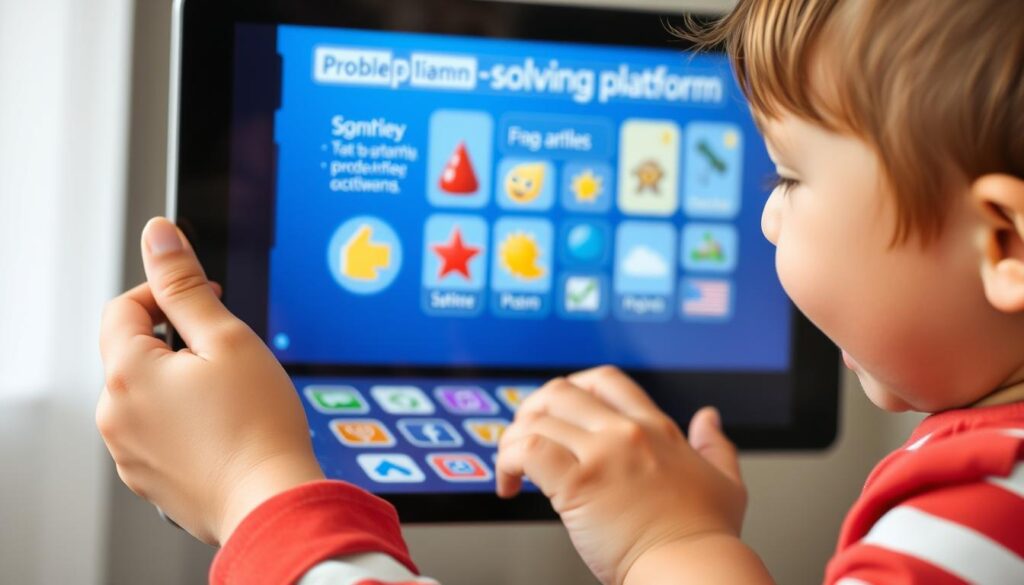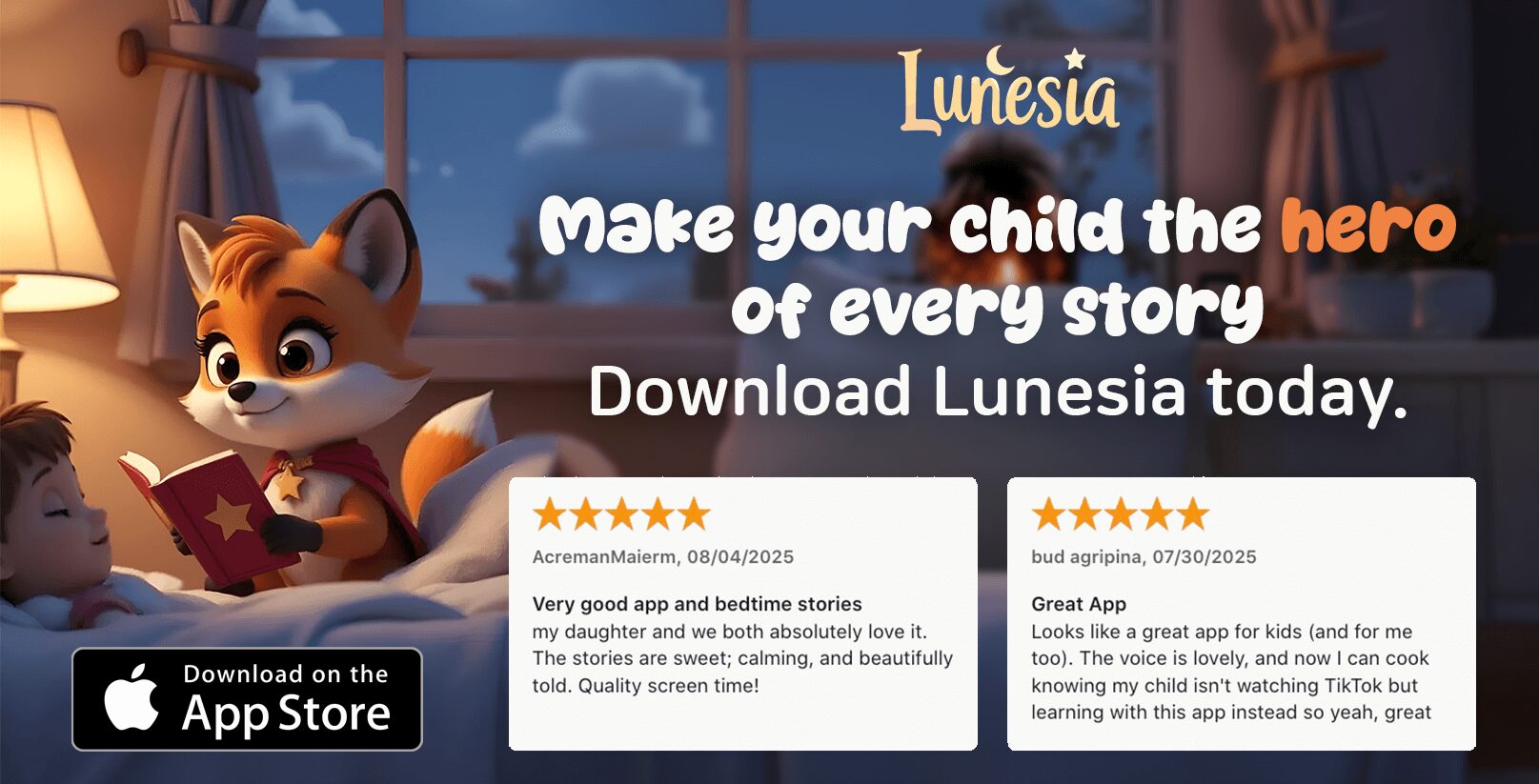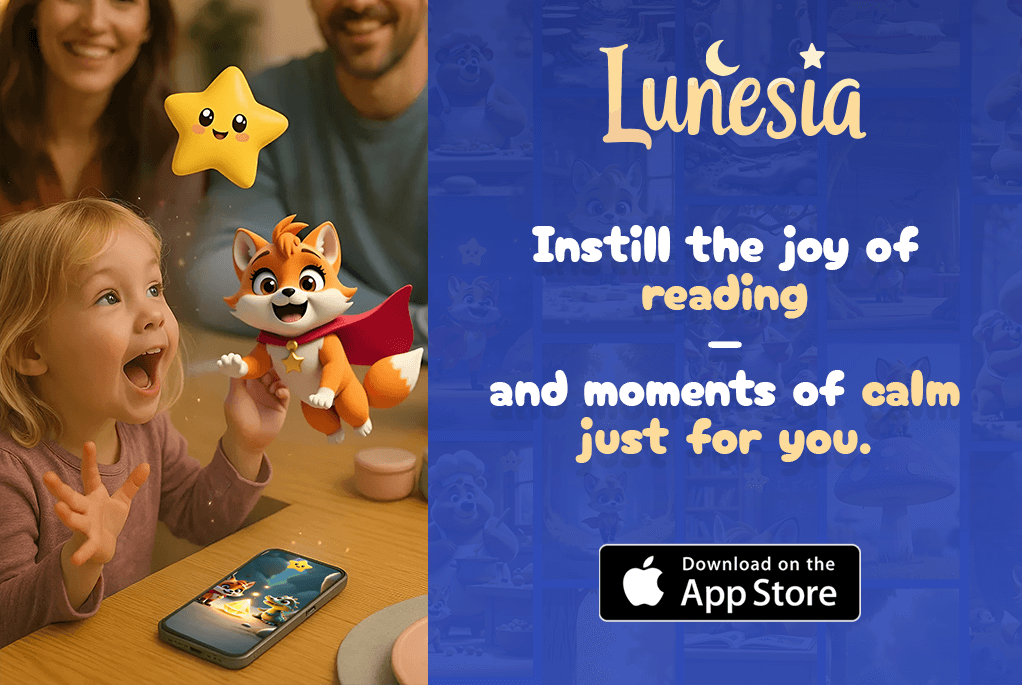As a mother and educator, I’ve seen firsthand how developing problem-solving skills can transform a child’s ability to navigate the world. It’s not just about academics; it’s about building confidence and resilience that will benefit them throughout their lives.
With so many educational platforms available, choosing the right one can be overwhelming. That’s why I’m here to guide you through a comparison of two leading platforms: Lunesia and [Competitor X]. Both are designed to foster critical thinking and creative problem-solving in children.
We’ll explore how each platform approaches teaching these essential skills, examining their methodologies, curriculum structures, and engagement techniques. By the end of this guide, you’ll be better equipped to decide which platform is best suited to your child’s unique needs and learning style.
Understanding Problem-Solving Skills Development in Children
The development of problem-solving skills in children is a vital aspect of their overall cognitive growth. As a parent, it’s essential to understand how these skills evolve and how you can support your child’s progress.
Problem-solving skills are not just about academics; they form the foundation for success across all areas of life, from social relationships to future career opportunities. As children grow, their approach to challenges changes significantly, progressing from concrete to abstract thinking.
Why Problem-Solving Skills Matter for Future Success
The importance of problem-solving skills cannot be overstated. These skills are crucial for your child’s future success, enabling them to navigate complex situations, make informed decisions, and adapt to new challenges. By developing strong problem-solving abilities, your child will be better equipped to handle the demands of an ever-changing world.
| Age Group | Cognitive Stage | Problem-Solving Characteristics |
|---|---|---|
| Toddlers (1-3 years) | Sensorimotor | Trial-and-error, exploring cause-and-effect |
| Preschoolers (4-5 years) | Preoperational | Egocentric thinking, beginning to use symbols |
| School-age children (6-12 years) | Concrete operational | Logical thinking, applying rules to solve problems |
| Adolescents (13+ years) | Formal operational | Abstract thinking, hypothetical reasoning |
The Cognitive Development Stages of Problem-Solving Abilities
Children progress through various cognitive stages problem-solving as they develop. Understanding these stages can help you tailor your support to your child’s needs. From basic trial-and-error in toddlerhood to sophisticated hypothetical reasoning in adolescence, each stage builds upon the previous one, gradually enhancing your child’s problem-solving capabilities.
By recognizing the cognitive development stages and supporting your child’s progression, you can help them become more confident and effective problem solvers.
Overview of Lunesia’s Approach to Problem Solving

Lunesia’s innovative approach to problem-solving is revolutionizing how children develop critical thinking skills. By leveraging advanced algorithms and data-driven insights, Lunesia creates a personalized learning experience that adapts to each child’s unique learning patterns and progress.
Lunesia’s Algorithm-Based Teaching Methodology
Lunesia’s algorithm-based teaching methodology is designed to challenge children at the optimal level, ensuring they’re neither bored nor overwhelmed. This approach uses continuous assessment and adjustment to provide the right level of difficulty, fostering a love for problem-solving.
Key Features of Lunesia’s Problem-Solving Curriculum
The curriculum is structured to break down complex problems into manageable steps, gradually increasing in difficulty as the child progresses. Visual learning tools and interactive challenges are key components, making learning engaging and fun.
Age Groups and Skill Levels Supported by Lunesia
Lunesia supports children from early elementary through middle school, adjusting its approach according to each developmental stage. The platform’s flexibility ensures that children of various skill levels can benefit, whether they’re just starting out or advanced.
By providing a comprehensive and adaptive learning experience, Lunesia equips children with the problem-solving skills necessary for future success. The parent dashboard offers valuable insights into a child’s strengths and areas for growth, helping parents support their child’s educational journey.
Overview of [Competitor X]’s Approach to Problem Solving

In the realm of educational technology, Competitor X has made a name for itself with its innovative approach to teaching problem-solving skills. As we delve into the specifics of their methodology, it becomes clear that Competitor X is dedicated to providing a comprehensive learning experience.
Core Teaching Philosophy
Competitor X approaches problem-solving development through its distinctive teaching philosophy that emphasizes creative thinking and collaboration. By fostering an environment where children are encouraged to explore and learn together, Competitor X lays the groundwork for effective problem-solving skills. The foundational principles behind Competitor X’s methodology translate into practical learning experiences that are both engaging and challenging.
Key Features of Problem-Solving Tools
The platform boasts several unique features that set it apart, including its approach to feedback, reward systems, and the types of problems it presents to learners. Competitor X structures its learning progression carefully, prioritizing specific problem-solving skills at different stages. This thoughtful approach ensures that children build a strong foundation in critical thinking.
Age Groups and Skill Levels Addressed
Competitor X is designed for children across various age ranges and skill levels, adjusting its content and approach to suit different developmental stages. Whether your child is just beginning to develop problem-solving skills or is looking for more advanced challenges, Competitor X has a tailored approach to support their growth.
[Competitor X] vs Lunesia Problem Solving: A Detailed Comparison
The world of educational technology is filled with options, but let’s dive into how Lunesia and Competitor X compare in teaching problem-solving skills.
Teaching Approaches: Algorithmic vs. Traditional Methods
Lunesia employs an algorithm-based approach, tailoring learning to individual children’s pace and understanding. In contrast, Competitor X uses more traditional teaching methods, relying on established curricula. While Lunesia’s method offers personalized learning, Competitor X’s approach provides a structured framework.
A key difference lies in how each platform adapts to a child’s learning style. Lunesia’s algorithm adjusts difficulty based on performance, whereas Competitor X relies on teacher or parent input to adjust the curriculum.
![A dynamic side-by-side comparison of [Competitor X] and Lunesia's problem-solving approaches. In the foreground, two figures representing the respective platforms engage in a thoughtful discourse, their expressions conveying careful consideration. The middle ground showcases visual metaphors for their methodologies - [Competitor X] employing analytical frameworks, Lunesia embracing a more holistic, exploratory approach. The background frames the scene with a backdrop of sleek, modern architecture, hinting at the high-tech, innovative nature of the topic. Warm, focused lighting illuminates the central figures, creating a sense of contemplation and clarity. The overall composition strikes a balance between professionalism and dynamism, inviting the viewer to delve into the nuanced comparison at hand. A dynamic side-by-side comparison of [Competitor X] and Lunesia's problem-solving approaches. In the foreground, two figures representing the respective platforms engage in a thoughtful discourse, their expressions conveying careful consideration. The middle ground showcases visual metaphors for their methodologies - [Competitor X] employing analytical frameworks, Lunesia embracing a more holistic, exploratory approach. The background frames the scene with a backdrop of sleek, modern architecture, hinting at the high-tech, innovative nature of the topic. Warm, focused lighting illuminates the central figures, creating a sense of contemplation and clarity. The overall composition strikes a balance between professionalism and dynamism, inviting the viewer to delve into the nuanced comparison at hand.](https://lunesia.app/wp-content/uploads/2025/06/A-dynamic-side-by-side-comparison-of-Competitor-X-and-Lunesias-problem-solving-approaches-1024x585.jpeg)
Curriculum Structure and Learning Progression
Both platforms offer comprehensive curricula, but they differ in structure. Lunesia’s curriculum is modular, allowing children to jump between topics. Competitor X follows a more linear progression, building upon previously learned concepts.
| Feature | Lunesia | Competitor X |
|---|---|---|
| Curriculum Structure | Modular | Linear |
| Learning Progression | Adaptive | Sequential |
Engagement Techniques and Motivation Systems
Lunesia and Competitor X both incorporate gamification elements to keep children engaged. However, Lunesia focuses on rewarding progress, while Competitor X emphasizes competition with peers.
Lunesia’s visual design is more contemporary, potentially appealing more to younger children. Competitor X, on the other hand, uses a more traditional interface that some parents might find more trustworthy.
Pricing, Accessibility, and Value for Money
When it comes to pricing, Lunesia offers a subscription-based model with various tiers, including a basic free version. Competitor X operates on a one-time purchase model with optional premium content.
In terms of accessibility, both platforms are available on multiple devices, but Lunesia offers offline access, making it more versatile for families on the go.
| Pricing Model | Lunesia | Competitor X |
|---|---|---|
| Pricing | Subscription-based | One-time purchase |
| Free Version | Yes | No |
| Offline Access | Yes | No |
How to Assess Your Child’s Problem-Solving Learning Style
Every child has a distinct way of solving problems, and recognizing this can help you make informed decisions about their education. As a parent, understanding your child’s unique problem-solving approach is vital in selecting the most appropriate educational tools.
Identifying Cognitive Strengths and Challenges
To assess your child’s problem-solving learning style, start by observing their natural strengths and areas where they might need more support. Some children are visual-spatial thinkers, exceling at puzzles and understanding diagrams, while others are sequential reasoners, thriving on step-by-step logic. You can identify these patterns through simple at-home activities, such as:
- Providing puzzles and brain teasers to solve
- Engaging in strategy games like chess or checkers
- Observing how they approach everyday challenges
By recognizing your child’s cognitive strengths and challenges, you can better understand their problem-solving learning style.
Matching Learning Styles to Platform Features
Once you’ve identified your child’s learning style, you can match it to the specific features of educational platforms like Lunesia and its competitors. For instance, if your child is a visual-spatial thinker, they might benefit from Lunesia’s interactive visual puzzles. On the other hand, if they’re sequential reasoners, they might thrive on the structured logic exercises offered by Lunesia or other platforms.
| Learning Style | Lunesia Features | [Competitor X] Features |
|---|---|---|
| Visual-Spatial Thinkers | Interactive visual puzzles, diagram-based exercises | Image-based problem-solving activities |
| Sequential Reasoners | Structured logic exercises, step-by-step challenges | Sequential puzzle-solving, logic games |
By matching your child’s learning style to the right platform features, you can make an informed decision that supports their educational needs.
Step-by-Step Implementation Guide for Parents
The journey to enhancing your child’s problem-solving skills begins with a simple yet effective setup process. As a parent, you’re about to embark on a rewarding journey that will not only boost your child’s cognitive abilities but also bring you closer to understanding their learning needs.
Getting Started with Lunesia: Setup and First Lessons
To get started with Lunesia, begin by creating an account on their website. The signup process is straightforward, requiring basic information about your child, such as their age and current skill level. Once you’ve completed the registration, you’ll be guided to configure the initial settings. Lunesia’s algorithm-based teaching methodology is designed to adapt to your child’s learning pace, so it’s essential to provide accurate information during setup.
After configuring the settings, you’ll be introduced to Lunesia’s intuitive interface. The platform is designed to be user-friendly, making it easy for both you and your child to navigate. Start with the first lesson, which will introduce your child to basic problem-solving challenges. It’s crucial to be present during these initial sessions to provide guidance and encouragement.

Getting Started with [Competitor X]: Setup and First Lessons
Setting up [Competitor X] involves a similar process. Begin by signing up on their website and providing the required information about your child. [Competitor X] uses a traditional teaching approach, so their initial lessons are designed to introduce fundamental concepts in a structured manner.
Once you’ve completed the setup, explore [Competitor X]’s interface together with your child. The platform offers a range of tools and resources to support learning. Start with the recommended first lesson, which will help your child get accustomed to the platform’s problem-solving exercises. Be available to assist and motivate your child as they progress through these initial challenges.
| Platform | Setup Process | First Lessons |
|---|---|---|
| Lunesia | Algorithm-based, adaptive to child’s skill level | Introduces basic problem-solving challenges |
| [Competitor X] | Traditional approach, structured learning path | Focuses on fundamental concepts and structured exercises |
As you guide your child through the initial lessons on either platform, remember to establish a consistent learning routine. This could mean dedicating a specific time each day to practice problem-solving skills. For younger children, shorter sessions with more frequent breaks are recommended, while older children can engage in longer, more focused sessions.
It’s also vital to create a supportive learning environment that minimizes distractions and maximizes engagement. Encourage your child to ask questions and explore different solutions, but avoid solving the problems for them. As they progress, you’ll be able to gradually transition from highly supported sessions to more independent problem-solving.
“The way we talk to our children becomes the way they talk to themselves.” – Karen McCallum
This quote emphasizes the importance of creating a positive and encouraging environment as your child develops their problem-solving skills.
Monitoring and Supporting Your Child’s Progress
Effective support for your child’s problem-solving development starts with understanding their progress and adapting your approach accordingly. As a parent, you play a vital role in this process by leveraging the tools and insights provided by platforms like Lunesia and [Competitor X].
Using Lunesia’s Parent Dashboard and Progress Reports
Lunesia’s parent dashboard offers a comprehensive overview of your child’s problem-solving journey. You can track their progress, identify patterns in their approach, and understand their strengths and challenges. The dashboard provides key metrics such as completion rates, accuracy, and time taken to solve problems, giving you a clear picture of your child’s development.
For instance, you can use the dashboard to:
- Monitor your child’s progress over time
- Identify areas where they need extra support
- Adjust the difficulty level of problems based on their performance
Using [Competitor X]’s Parent Dashboard and Progress Reports
Similarly, [Competitor X] provides a parent dashboard that allows you to monitor your child’s progress and adjust their learning path accordingly. The progress reports offer detailed insights into your child’s problem-solving skills, highlighting areas of strength and weakness.
| Feature | Lunesia | [Competitor X] |
|---|---|---|
| Progress Tracking | Detailed metrics on completion rates and accuracy | Insights into problem-solving skills and knowledge gaps |
| Customization | Adjust difficulty levels based on performance | Personalized learning paths based on progress |
By using these tools effectively, you can provide targeted support to your child, celebrate their progress, and help them develop a strong problem-solving mindset.

Conclusion: Choosing the Right Problem-Solving Platform for Your Child
As a parent, you’re likely eager to provide your child with the best possible tools to develop their problem-solving skills, and a comparison of Lunesia and [Competitor X] will help you achieve that goal. When choosing a problem-solving platform, it’s crucial to consider your child’s unique needs and learning style. Lunesia and [Competitor X] offer distinct approaches, so understanding their differences is key.
The teaching methodology, curriculum structure, engagement techniques, and pricing are all important factors to consider. While Lunesia uses an algorithm-based approach, [Competitor X] employs a more traditional method. There’s no one-size-fits-all solution; the best choice depends on your child’s strengths, challenges, and interests.
For highly visual learners, [Competitor X] might be more effective, whereas Lunesia could be better suited for sequential thinkers. Trust your parental instincts and remain flexible – be willing to try a different approach if needed. By considering these factors, you’ll be able to make an informed decision and support your child’s problem-solving journey with confidence.
FAQ
What is the best way to help my child develop problem-solving skills?
I recommend using a combination of real-life examples, interactive tools, and guided practice to help your child develop these skills. Platforms like Kodable and Scratch can be great resources!
How do I know if my child is making progress in developing problem-solving abilities?
You can track progress by observing your child’s ability to tackle challenges independently, their persistence, and their willingness to try new approaches. Regular feedback from teachers or mentors can also be helpful.
Are there any age-specific recommendations for teaching problem-solving skills?
Yes, children as young as preschool age can start learning basic problem-solving skills through play. As they grow, you can introduce more complex challenges tailored to their age and skill level.
How can I support my child’s cognitive development through problem-solving activities?
Engage your child in activities that promote critical thinking, such as puzzles, brain teasers, and strategy games. Encourage them to think aloud and explore different solutions.
What are some effective engagement techniques to keep my child motivated?
Make problem-solving fun by incorporating games, rewards, and positive reinforcement. Celebrate their successes and provide constructive feedback to help them improve.
Can you recommend any online platforms for teaching problem-solving skills?
Absolutely! Platforms like Code.org, Kodable, and Tynker offer interactive coding lessons and problem-solving activities that can be a great starting point.
How do I assess my child’s learning style to choose the right resources?
Observe how your child learns best – whether through visual, auditory, or hands-on approaches. This will help you select resources that cater to their individual needs.
Are there any additional resources I can use to supplement my child’s learning?
Yes, you can explore books, educational apps, and community programs that focus on problem-solving skills. Many libraries and online platforms offer a wealth of resources to support your child’s development.
![[Competitor X] vs Lunesia problem solving](https://lunesia.app/wp-content/uploads/2025/06/Competitor-X-vs-Lunesia-problem-solving-1024x585.jpeg)



